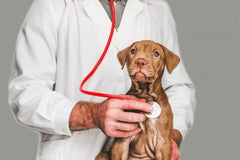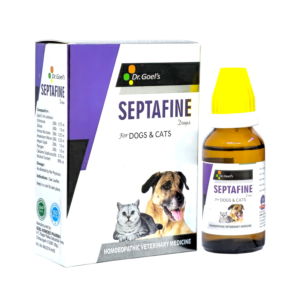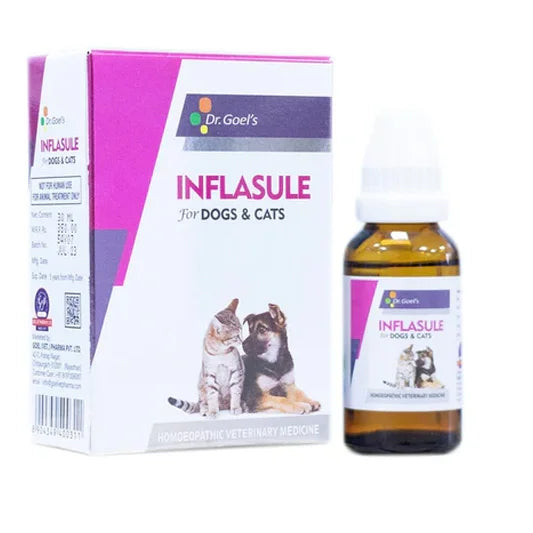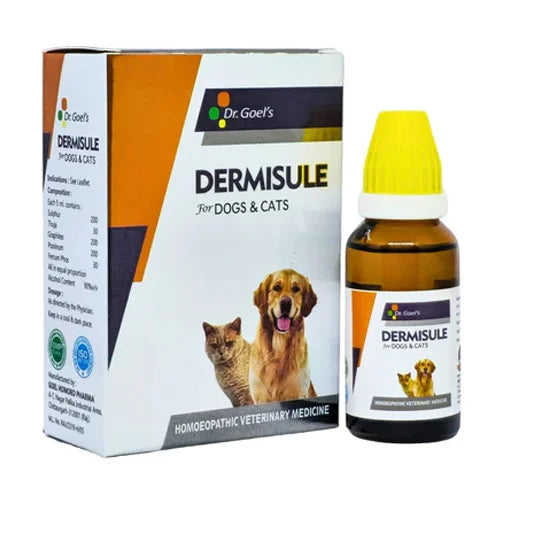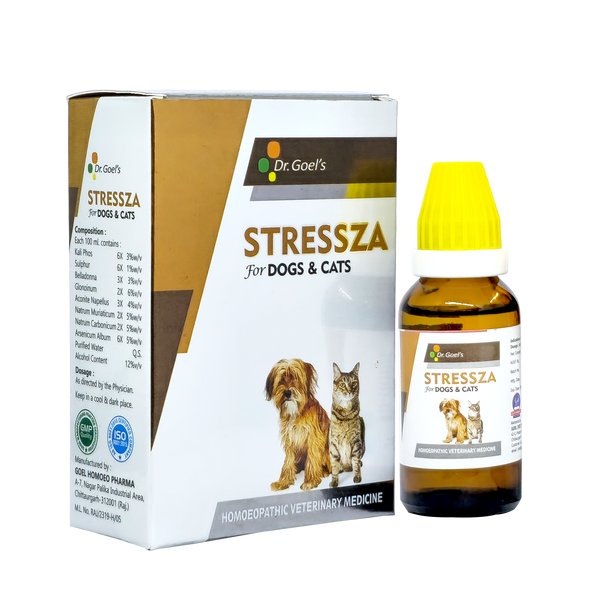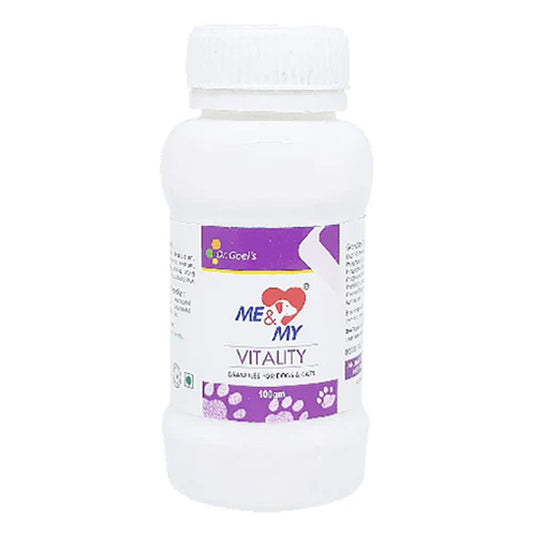
The Storm Of Sepsis – Faqs, Diagnosis And Management Of Sepsis
Bacteria are microscopic microorganisms that cannot be visible to the naked eye but still possess the power to cripple the visible- kind-of big living animals such as Dogs, Cats, and in fact, even humans! It is evident from Historical references, The Great Plague aka The Black Death- was a bubonic plague pandemic occurring in Afro-Eurasia from 1346-53 killing millions and this microorganism was in fact a Bacteria!
And thus, we now know, something so microscopic, so tiny can be so powerful to cause real damage to your pet’s body.
Now that we have our background ready about Bacteria and their Prowess, let’s dive into this Blog which is about Septicemia, Sepsis in the body caused by nasty Bacteria, also we will go through Homeopathic Veterinary Medicine to treat our pets.
WHAT IS SEPTCEMIA?
Septicemia is also commonly called Sepsis. Septicemia word refers to sepsis in the blood.
Sepsis occurs when certain bacterial chemicals are released in the bloodstream to fight infection and trigger inflammation throughout the body. Septicemia occurs when a bacterial infection occurring elsewhere in the body, such as the lungs, Uterus, etc., enters the bloodstream.
This is an extremely serious and dangerous condition because the bacteria and their toxins can be carried throughout the bloodstream to your entire body. This can trigger a cascade of changes that leads to damage to multiple organ systems, leading to organ failure, sometimes even resulting in death.
This condition is also commonly referred to as
- Blood Poisoning
- Septic Fever

THE PHASES OF SEPSIS/SEPTICEMIA –
Broadly we can observe three phases of Sepsis in the body they are –
- SEPSIS
- SEVERE SEPSIS
- SEPTIC SHOCK
Sepsis as a condition progresses from mild to severe to extremely severe and ultimately death if not dealt with aptly and quickly. Thus, quick medical help must be sought out in case of sepsis. Let’s discuss further phases of sepsis.
PHASE I – SEPSIS
This is characterized by –
1.Fever of high grade
Most often, the normal body temperature of Dogs is around 101-102°F, anything above this is termed pyrexia or fever. Fever usually comes when there is some sort of bacteria/virus or microorganism to be general which is antigenic in nature (harmful and damaging in nature). Thus, fever can be a clear and good indication that some sort of infection is occurring inside the body, and thus apt diagnostic procedures should be carried out to figure it out!
2. Tachypnea
Rapid and quick breathing is medically termed tachypnea.
It is generally observed along with fever or pyrexia. Thus, even a slight abnormal increase in breathing rate or way is to be observed keenly and it could be an indicator of Sepsis.
3. Increase in heartbeat rate.
With the increase in respiratory rate and fever, on examination by your vet, the heartbeat rate also shows an increase.
4. Confirmed Diagnosis of Infection.
Sepsis is characterized by bacterial infection occurring inside the body of your pet. Sepsis in dogs is generally seen due to active infection caused by bacteria.
The most commonly occurring infections leading to sepsis in severe conditions are –
- GI tract Infections – e.g., canine parvoviral enteritis, Hemorrhagic Gastro Enteritis
- Respiratory Tract Infection e.g. bacterial pneumonia, pneumococcal Infection, etc.
- The chronic urinary-tract disease is most often than not caused by the bacterium Escherichia coli
- Uterine Infections – infections such as pyometra (pus in the uterus), mucometra (mucus in the uterus), endometritis (inflammation of the endometrial walls of the uterus), etc. can also trigger an inflammatory response in the body.
- Most often, Gram-negative bacterial infections predominate, with E. coli being the most common isolate observed. However, any bacterial, fungal, parasitic, or viral organism may cause sepsis.
EXTRA RESPIRATORY CAUSES OF COUGH
Extra Respiratory essentially means the causes lie apart from the respiratory system. That is, the cause of coughing is not the lungs but something apart from the respiratory system is causing coughing.
1. THROAT CLEARANCE
Coughing is the main standard method of clearing the throat and trachea. What exactly happens is whenever your pet’s airways become clogged with mucus or foreign particles such as smoke or dust, the body tries to remove it as quickly as possible through coughing. It is a reflex reaction that attempts to clear the particles from the tract to make breathing easier.
Usually, this type of coughing is relatively infrequent, however, coughing might continue to increase if the exposure to irritants such as smoke/dust is not removed at the earliest.
It could be noticed that pets, whose owners are chronic cigarette smokers, can also end up coughing.
2. ASTHMA
One of the causes of coughing could be asthma. Typically, asthmatic coughing involves wheezing, which makes it easy to identify. Dog asthma is an allergic disease. There is some trigger that initiates the ‘Anti-Foreign Body Mechanism’ inside the body. Asthma attacks in dogs are caused by an allergic reaction and often result in airway inflammation. It causes constriction and spasms of the small airways in the lungs. Asthma is usually seen in middle-aged dogs and some young dogs.
However, it’s not a frequent cause of coughing but it’s always better to get your pets diagnosed by a trained veterinarian who will suggest you the line of treatment for the same.
3. MEDICATION
Some medications can cause coughing, although even this is generally a rare side effect. Angiotensin-converting enzyme (ACE) inhibitors [used to treat high blood pressure and heart conditions] can cause coughing.
However, the coughing stops when the medication is discontinued.
4. MISCELLANEOUS CONDITIONS
Other conditions that may cause a cough include:
- a) Damage to the vocal cords
- b) Postnasal drip
- c) Serious and life-threatening conditions such as pulmonary embolism or Congestive heart Failure.
Tip – A persistent cough during the evening or night hours indicates heart problems so it’s best to get your pet diagnosed at the earliest for any doubts about the cause of coughing/wheezing.
Now that we have discovered the non-respiratory causes, let’s now focus on the Respiratory Causes of coughing.
PHASE II – SEVERE SEPSIS
When the symptoms of sepsis are not properly managed at earlier stages, it leads to a severe septic condition in the body and thus triggering a condition called SIRS (Systemic Inflammatory Response Syndrome)
The sequence of events leading to sepsis is very complex and not completely understood. However, it’s noted that microbial products e.g. endotoxins from gram-negative bacteria, exotoxins, peptidoglycans, and from gram-positive bacteria and fungal cell-wall materials induce SIRS- systemic inflammation through activation of immune cells, triggering an immune response.
Symptoms observed are –
1. Decreased urination.
2. Depression or changes in mental state.
- Low platelet count.
- Tachypnea or difficulty in breathing.
- Abnormal heart functions.
- Unconsciousness and recumbent condition due to weakness
- Cyanosis Blueish discoloration of the mucus membranes (Gums)
PHASE III – SEPTIC SHOCK
Symptoms of septic shock are essentially similar to those of severe sepsis as mentioned above, but they also include an important symptom – a significant drop in blood pressure.
This drop in blood pressure can lead to heart failure, stroke, multiple organ failure, respiratory failure, and ultimately leading to death.
DIAGNOSIS OF SEPSIS
On examination by your veterinarian, your pet may show certain clinical signs and the history which you provide to your vet helps in the formation of a solid Diagnosis. Ensure that you give complete history (whether your pet had any wounds prior, or any Infection, diarrhea vomiting, etc.)
At 1st clinical presentation, your pet may show Hyperdynamic changes i.e. Characterized by Fever, Brick Red mucous membrane, Tachycardia, and Tachypnea. If a certain amount of time has passed, your pet might present clinical signs of Hypodynamic nature i.e. Hypothermia (drop in body temperature), pale mucous membranes, and hypotension.
Your Veterinarian will immediately focus on locating the infection so as to provide apt treatment. Each Bacteria/Virus is different and hence the choice of drugs used for treatment will vary. Thus, proper diagnosis is essential.
1. BLOOD PROFILE
CBC (complete blood count), LFT (Liver Function Test), and KFT (Kidney Function Test)
A routine complete blood check would provide a confirmatory diagnosis of infection. Serum biochemistry profile abnormalities may include – hyperglycemia or hypoglycemia, hypoalbuminemia, azotemia, etc. Coagulation abnormalities are also very commonly observed. Anticoagulant proteins are decreased. There may be Blood Acidosis and an increase in Lactate on Blood -Gas Analysis.
2. USG
Ultrasonography is a very important tool for locating infections in the body. For a female dog/cat who has a history of a pseudopregnancy or improper (heat) estrous cycle, your veterinarian will definitely opt for a USG to have a look at the uterus of your pet. Infections of the uterus (Pyometra etc) can be aptly diagnosed. Also, your veterinarian will have a look at the Kidneys, Liver, Gall Bladder, Intestines, and Stomach to check for any abnormalities in shape/size, any abnormal structures like cancer, polyps, stones, etc. Also, the walls of these internal organs can be properly observed, and thus, USG acts as a support to Blood Analysis for perfect diagnosis.
When Diagnosis is perfect, the treatment protocol is initiated which acts on that particular microorganism causing havoc in your pet’s body.
TREATMENT OF SEPSIS
1] ALLOPATHIC TREATMENT
Treatment is solely based on the diagnosis. Sometimes your vet may even carry out a Bacterial Culture test to check for the kind of bacteria that is causing the infection under a microscope. Based upon that, a perfect Antibiotic choice is made.
The use of appropriate broad-spectrum antimicrobial agents is recommended. Your Veterinarian may suggest Amoxicillin, Cephalosporins, etc based on the need of the hour.
The treatment also involves – Saline (to ensure that there’s no dehydration), Pain Killers such as NSAIDs, Etc. For some dogs, the administration of colloids and vasopressors (if presented with bradycardia, etc.) will be indicated.
In fact, the treatment protocol is not a rigid structure, and it solely depends upon the individual patients (i.e., How they react to therapy, what kind of drugs they need, etc.)
Additionally, supportive care includes-
- Nutritional management
- Frequent reassessment of a patient with the apt treatment protocol and
- Good nursing care by pet parents is a key aspect of the management of sepsis.
Homeopathic Solution For Dogs and Cats
SEPTAFINE for pets is the best remedy for treating conditions of sepsis anywhere in the body with exceptional improvement in metritis and pyometra conditions. It cures septic or septic-like symptoms in any part of the body.
This unique formulation was brought up by the leading Homeopathic Veterinary Medicine producing company Goel Vet Pharma Pvt Ltd. The company is certified under WHO GMP practices which highlight its hygienic manufacturing facilities. All the available formulations had undergone many clinical and field trials, thus gaining trust among many veterinarians and pet parents.
INFLASULE FOR EYE INFECTION IN PETSINFLASULE for pets is an excellent remedy in treating inflammation of joints, lameness, shifting pain due to swelling of joints (LYME DISEASE) associated with fever and anorexia, inflamed eyes of any reason or pain in the joints as in the case of arthritis.
DERMISULE For All Kinds of Skin Issues in Pets:
DERMISULE for pets is the best remedy for dogs suffering from different skin conditions like eczema, allergies, rashes, lesions with hair loss, redness, dry, scaly, pus, or bloody discharge. Specific or general lesions or spots as in Mange disease can also be improved.
ME and MY SKIN AND COAT Homeopathic Supplement
Me & My SKIN & COAT Pet Supplement is a peerless medicine for our pet’s skin and coat. It helps reattain natural skin and coat after injuries, chaps, cracks, scaly eruptions, or any acute skin lesion in pets. It is highly recommended to treat hair fall for any reason.
STRESSZA FOR PETS STRESS AND ANXIETY
STRESSZA for pets is an excellent remedy for treating Anxiety, Stress, and Canine Distemper. When your fur baby is unanimously scratching, barking, hiding behind, feeling anxious, eating nothing, even sometimes behaving wild or attacking unknowingly, etc. these all symptoms may be due to Anxiety and Stress or due to various causes of Canine Distemper. We have the best solution to all your problems, We have STRESSZA is a unique homeopathic veterinary formulation to relieve stress in pets.
Stressza for pets works for Stress due to Traveling, Crackers in Festive Season, Fighting with stray dogs, Home alone, Visiting Hospital for Vaccination, etc.
This is a unique supplement for pets experiencing extreme lassitude (inactiveness), depression, nervousness, irritability, hysterical behavior, night terror, insomnia, and other related symptoms






